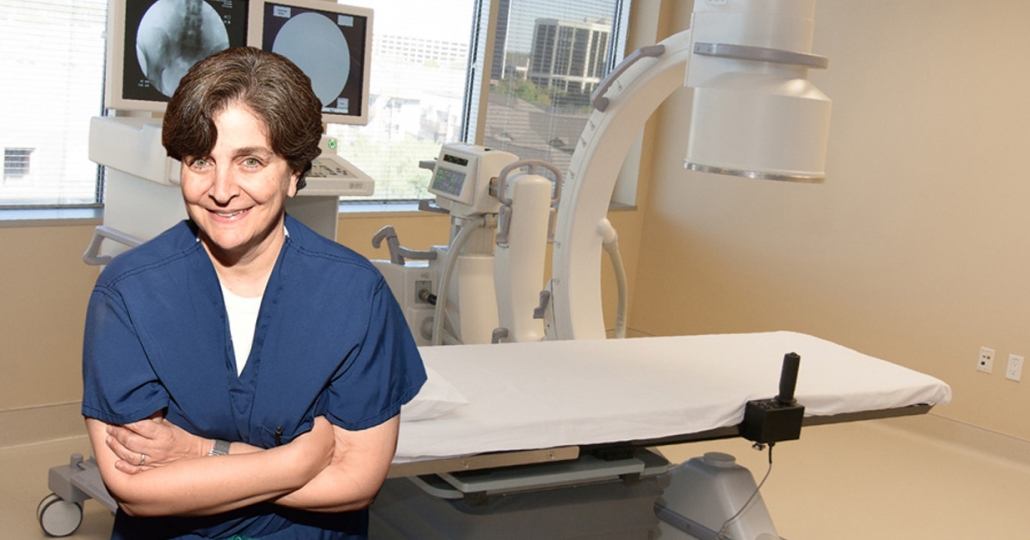Uterine Fibroid Embolization (UFE): What Women Want to Know
Dr. Suzanne Slonim is a friend of MacArthur OBGYN. She specializes in non-surgical fibroid treatment with Uterine Fibroid Embolization (UFE).
What is UFE?
UFE is a minimally invasive outpatient procedure to treat uterine fibroids. . The technique blocks the fibroid blood supply.
How is UFE performed?
After you are under anesthesia, UFE is performed by passing a tiny tube through the blood vessels directly to the blood supply of the fibroids. Then tiny particles are injected to block the fibroid blood supply. Without blood flow, the fibroids will die. UFE treats all the fibroids in the uterus at once, no matter the size, shape, number, or locations. There is no incision or stitches, and the scar is smaller than a grain of rice. Dr. Slonim does the procedures at the Fibroid Institute Dallas near Central Expressway (US 75) and LBJ Freeway (Interstate 635).
How long does UFE take?
Once you arrive at the Fibroid Institute, the preparation time takes about 30 minutes. The UFE procedure takes about 1 hour to perform. After the procedure, women are monitored in the recovery area for 2 hours. After that your family or friend can take you home.
What is the recovery time for UFE?
After UFE, you’ll be uncomfortable for a few days. Most women are able to return to work 7 to 10 days after the procedure. If you had the UFE on a Friday, you’d be off work the following week and then ready to go back to work by the Monday after that.
Is UFE effective?
UFE has been around since the 1990’s and has a proven track record. In women with symptomatic uterine fibroids, the UFE procedure has been shown to be effective 90% of the time in improving or eliminating the symptoms. It works well for heavy menstrual bleeding as well as the symptoms that come from the fibroids pushing on the organs near the uterus.
Can I have a UFE?
Most women who have symptomatic fibroids are candidates for the UFE procedure. It’s especially good for women who do not want a hysterectomy or who do not want to have any type of surgery. It’s a great choice for women who have medical problems that would make their surgery extra challenging or risky. And it’s perfect for women who would refuse a blood transfusion in case of emergency, like a Jehovah’s Witness. You can’t have a UFE if you are pregnant, if you have an active pelvic infection or if you’ve had radiation in your pelvis. If you are trying to get pregnant, UFE is not the first choice for treating your fibroids.
Wondering if Uterine Fibroid Embolization (UFE) is the right treatment for you?
Download a FREE UFE Check List to help you decide.
How can I get scheduled for the UFE procedure?
Talk to your doctor at MacArthur OB/GYN to see if UFE is a good option for you. If it is, we can refer you for a consultation with Dr. Slonim. She will explain the procedure to you in detail, including all the risks and what to expect after the procedure. She will need to see a pelvic MRI to make the final determination of whether you are a candidate for UFE. If you are, her office will take care of everything from getting insurance approval to making sure your recovery is going smoothly.
About Dr. Suzanne Slonim
Dr. Slonim founded the Fibroid Institute Dallas and the Fibroid Free movement to help relieve women of painful fibroid symptoms using options other than surgery or hysterectomy. She has successfully helped countless women take control of their lives and become Fibroid Free.
To learn more about Fibroid Institute Dallas visit the Fibroid Free website or Facebook page. Fibroid Institute Dallas is located at 12400 Coit Road, Suite 505, Dallas, TX 75251. Or visit the newest location in Southern Dallas at 1010 E. Wheatland Rd, Duncanville, TX 75116. Please call our offices at 972-392-2900 to make an appointment for a consultation. You can also CLICK HERE to schedule an appointment.




